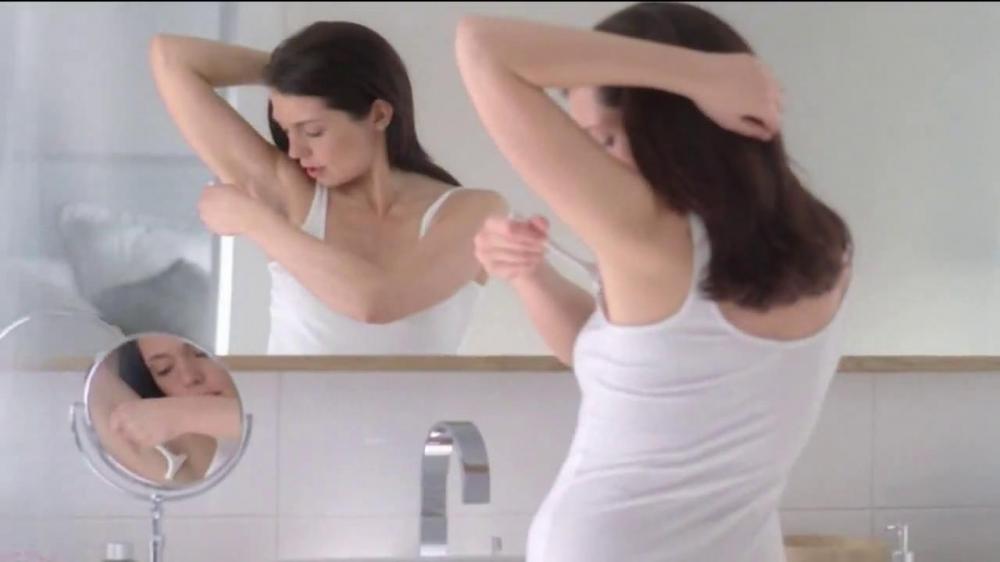Photo Credit: Dove
For the first few weeks of the semester, the Women’s Resource Center was shaved of its hedges. Granted, we were the recipients of a new, glorious porch, for which we are eternally and irrefutably grateful. But, deprived of our bushes, the members of the Women’s Resource Center felt exposed and perplexed. These hedges had been growing for years, and with the swift slip of a blade, gone. Histrionic debates on the matter transitioned quickly to a hairier conversation–body hair.
Many scholars cite the pornfrenzy and its dramatic expansion into the Internet realm as solidifying the image of the hairless woman as archetypal.However, as I’ve plucked through resources on hair removal, it seems that our current fixation has much deeper roots! Statues from ancient Egypt and Greece indicate that hair removal was standardized, particularly in elite circles, with pubic hair being viewed as uncivilized. Then, just take a look of some early sixteenth-century nudes. Maybe the muses’ pubic hair just didn’t catch the light of their artists (it is called the Dark Ages, after all), but it’s very possible that the propagation of female nudes from the early sixteenth century onwards may have affected women’s notions of their own body. In fact, it may have been the impetus for a widespread acclimatization of feminine normality that we are accustomed to today.
According to Jill Burke, lecturer in Italian Renaissance Art History at the University of Edinburgh, the subsequent renaissance nude propagated and fetishized restrictive ideals of desirability in a society where, for women, beauty was a cultural currency. Since, has this perception changed? According to Kirsten Hansen of Barnard College (no stated relation to Sally Hansen, but kind of weird), pubic hair removal was not common among western women until the 20th century. In 1915, Gillette marketed the first razor for women with the message that body hair was unsightly and needed to be removed. Gillette and other razor companies saw the potential in marketing to women as the absence of men in the American work force necessitated greater numbers of women. What better way to welcome and celebrate a woman in the workforce than to shift the dialogue away from her capabilities, and rather, draw attention to her physicality, ascribing her natural and healthy hair as vulgar and unprofessional? To be a “normal,” “professional,” and “desirable” woman often commands a lot of work. As we pluck, tweeze, and bleach, we neglect to take the time to understand just how these beauty norms have come to be.
The endless modification of the female form to achieve a prescribed level of approved femininity only perpetuates that we are not good enough as we are– particularly because the idea that there is one ideal feminine form is completely perverse. The diversity of the types of hair that we grow is a perfect exemplification of the fact that we come from different backgrounds and ethnicities. It is necessary to note, however, that body hair and head hair qualms can extend beyond the boundary of those who identify as women. Predominantly within recent years, likely also stemming from the growth of the porn industry (blame the porn), men have been bombarded by the manly man’s guide to Manscaping 101. Magazines like GQ and Men’s Fitness vaunt that they are the undeniable experts on the exact amount of hair women want on each part of the male body. Consequently, streamlined ideals of masculine attractiveness is based on heteronormative relationships are creating rigid standards that are beginning to penetrate popular culture.
At the end of the day, we are mammals. Body hair is growing off of you and it is completely your choice what you want to do about that. Don’t let anybody make you feel that the smoothness of your body is in any way an indicator of your sexuality, social status, political beliefs or any of those other compartments so easy to nestle ourselves and others into. Each follicle we pluck, tweeze, shave, or even straighten and curl, is a remarkable part of DNA. That is the fundamental stuff that makes us so uniquely us, a derivation of our ancestors, and also practically identical to our fellow humans, minus a few sex cells. It’s truly extraordinary The Women’s Resource Center would like to profusely express our gratitude to Facilities for replanting our hedges. Our bushes will continue to grow for many years to come.



